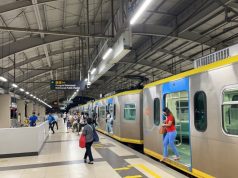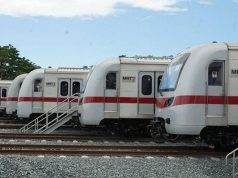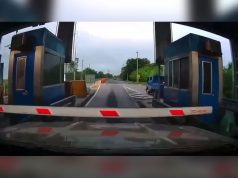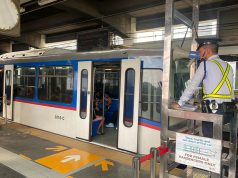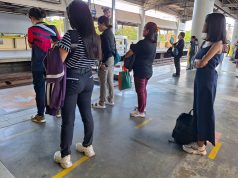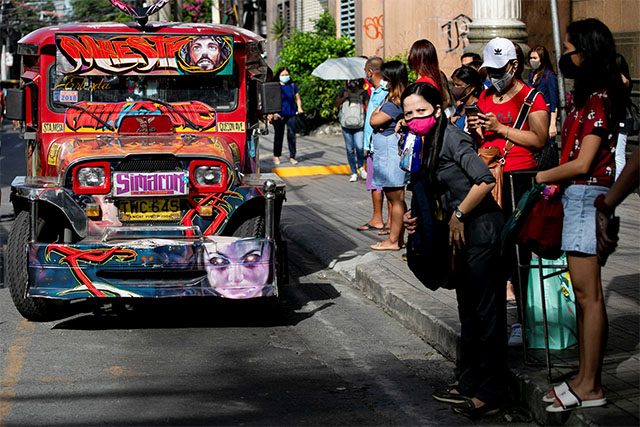
A transport rights group continued its appeal for the return of all traditional jeepneys amid the partial resumption of only a small fraction of public utility jeepneys on Friday.
In a memorandum released on July 1, the Land Transportation Franchising and Regulatory Board (LTFRB) approved the partial resumption of traditional public utility jeepneys starting on July 3.
However, the agency only allowed jeepneys with existing franchises that will travel around its 49 number-coded and designated routes.
The Pinagkaisang Samahan ng mga Tsuper at Operator Nationwide (Piston) bared that these jeepneys only amount to 6,002 of the 74,000 units that had been idle since the suspension of mass transport last March.
“This is very small compared to the actual number of jeepneys in Metro Manila. Many drivers and operators remain hungry,” Piston national president Mody Floranda said.
Piston further pointed out the ratio on Twitter, wherein only eight of 100 jeepneys are allowed to return to work, therefore still leaving thousands of more drivers without income.
“8 lamang sa bawat 100 na jeep ang papayagan ng LTFRB na makabalik sa kalsada. Walang-awa nilang patuloy na ginugutom ang libo-libong tsuper at operator,” the group said.
“Kaya’t tuloy ang panawagan natin na ibalik ang lahat ng jeep sa dating mga ruta! 100% Balik-Pasada, Zero Phaseout, ngayon na!” the group added.
8 lamang sa bawat 100 na jeep ang papayagan ng LTFRB na makabalik sa kalsada. Walang-awa nilang patuloy na ginugutom ang libo-libong tsuper at operator.
Kaya't tuloy ang panawagan natin na ibalik ang lahat ng jeep sa dating mga ruta! 100% Balik-Pasada, Zero Phaseout, ngayon na! https://t.co/nF3NU2zCvC
— PISTON (@pistonph) July 3, 2020
Piston’s post also retweeted a CNN Philippines photo of an old jeepney driver begging for alms along Rizal Avenue in Manila.
The driver’s route from Baclaran to Sta. Cruz is not included in LTFRB’s list.
The group previously posted photos of traditional jeepneys, dubbed “kings of the road,” equipped with customized dividers and other tools that their members have prepared to comply with the minimum health protocols against the COVID-19.
“Matagal na kaming handa sa balik-pasada, pero si Duterte at kanyang mga ulupong, maka-dayuhan at maka-kapitalistang jeepney phaseout ang gustong itulak,” the group said on June 22.
Matagal na kaming handa sa balik-pasada, pero si Duterte at kanyang mga ulupong, maka-dayuhan at maka-kapitalistang jeepney phaseout ang gustong itulak.https://t.co/DwSZQWw18C
— PISTON (@pistonph) June 22, 2020
Despite the ease travel restrictions in Metro Manila on June 1, traditional jeepneys and UV express vans were not included in the types of mass transport units that the Department of Transportation allowed to operate for the first few weeks at limited capacity.
Progressive organizations, youth groups and concerned Filipinos took the initiative to help raise funds and conduct relief operations to allow these drivers cope with the pandemic given their nearly three months of financial losses.
Following protests and criticisms from the public, the LTFRB later decided to allow the operations of UV Express vans and traditional jeepneys before June ends. UV Express vans partially resumed last June 29.
Routes and other guidelines
In LTFRB’s “Guidelines for the Operations of Traditional Public Utility Jeepneys (PUJs) During the Period of General Community Quarantine (GCQ) in Metro Manila,” the 49 routes are:
- T102 Camarin – Novaliches
- T103 Karuhatan – Ugong
- T104 Malabon – Monumento via Letre
- T105 Malabon (TP) – Navotas (TP)
- T107 Monumento – Navotas via Letre
- T205 Cubao – Proj. 4 via J.P. Rizal
- T206 Cubao – San Juan via N. Domingo
- T208 IBP Road – Lupang Pangako via Gravel Pit Road
- T209 Marikina – Pasig
- T210 Pantranco – Proj. 2 & 3 via Kamuning
- T211 Proj. 2 & 3 – Q Mart
- T212 Sucat-Highway – Bagumbayan
- T213 Ayala – Pateros via JP Rizal
- T215 Marikina – Pateros via Pasig
- T301 A. Boni – A. Mabini via 10th Ave
- T302 A. Bonifacio – D Tuazon/E. Rodriguez Ave.
- T303 A. Rivera – Raon via Severino Reyes
- T305 Ayala – Mantrade via Pasong Tamo
- T306 Ayala – Washington
- T309 Balic-Balic – Quiapo via Lepanto
- T310 Balic-Balic – Bustillos via G. Tuazon
- T311 Balic-Balic – Espana/M. Dela Fuente
- T312 Balintawak – Frisco
- T313 Balut – Blumentritt
- T314 Blumentritt – North Harbor via Divisoria
- T316 Boni – Kalentong JRC via Boni Avenue
- T317 Dian – Libertad
- T318 Divisoria – Gastambide via Morayta
- T320 Divisoria – Pier North via Plaza Moriones
- T321 Divisoria – Quiapo via Evangelista
- T322 Evangelista – Libertad
- T323 Divisoria – Velasquez
- T324 Guadalupe Market – L. Guinto via Pasig Line
- T326 L. Guinto – Sta. Ana
- T327 Herbosa/Pritil – P. Guevarra via Tayuman
- T328 Kalentong/JRC – P. Victorino via P. Cruz
- T330 Divisoria – Sta. Cruz via San Nicolas
- T331 Kayamanan C – PRC via Pasong Tamo
- T332 L. Guinto – Zobel Roxas via Paco
- T333 Lardizabal – Rizal Ave. via M. Dela Fuente
- T334 Lealtad – Quiapo (Barbosa) via Lepanto
- T335 Kalentong/JRC – Libertad (Mandaluyong) Nueve de Pebrero
- T336 Kalentong/JRC – Namayan via Vergara
- T338 North Harbor – Quiapo via Evangelista
- T340 P. Faura – San Andres
- T343 Quezon Ave. – Sta. Mesa Market via Araneta Avenue
- T344 Crame – San Juan via Pinaglabanan
- T401 Alabang – Sucat via M.L. Quezon
- T402 Soldiers Hill (Phase IV) – Talon via Alvarez
Jeepney drivers who drive along these routes no longer need a special permit. The operators will be provided a special QR Code that should be printed and displayed on the corresponding vehicle.
The fare remains at P9 for the first four kilometers and P1.50 for each succeeding kilometer.
Jeepney drivers and operators are also required to comply with health and safety protocols.
“Operators and drivers are likewise required to comply with a series of safety measures prior to dispatch and during operations, such as checking of body temperature, wearing masks and gloves at all times, and operating at a maximum of 50% capacity,” LTFRB said.




